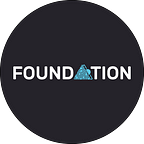Tokenomics Summary
With the transition to a more decentralized, permissionless network, and increase in transactions, the Everest Foundation will be putting forth a vote to the community on how best to align interests for a secure, permissionless, decentralized blockchain and associated identities.
As noted in other publications, the Foundation will be giving 15 billion identities + wallets to humanity, with each user receiving 0.001 ID token — allocating 15M ID tokens from the Enterprise Development Fund. Additionally, EverChain, a proof-of-stake blockchain, will be secured by 100 validators (each staking 400k IDs); and the Foundation will use 10% of proceeds to pay for storage, bandwidth, ongoing maintenance, support. Validators will be compensated a minimum on a pro rata basis based on the amount of time the stake is “vaulted” per the below:
Subject to a vote by the community (highlighted green to be voted on), validators will be rewarded 5% or 10% of transactions in ID tokens for their efforts to secure the network; 50% or 60% of transaction fees will be burned; EverChain transactions will be $0.0001 or $0.0002; identity verification will be $0.15 or $0.20. A sample model with $0.0001/txn, $0.15/verification, 10% reward, 50% burn, and $1/ID would look like the following:
The Foundation empowers users to access regulated financial services from Everest Network, Ltd. Those transactions will run on a “regulated chain”, which also leverages EverChain — hence, transactions for these services are subject to the validator reward and transaction burn parameters that are determined by the community. Those services include the following:
● eKYC/AML
● Credential sharing
● Use of the CRDT, the licensed, programmable stablecoin
● Payments
● International remittances
● Buy, sell, trade crypto
● Lend/borrow
● SDK
● Fast API
● Reporting
● Minting & issuing NFTs
● Minting & issuing tokens to run on EverChain
A sample model would look like the below sample, with the following assumptions: $1/ID, 50% burn, 10% to validators, sample users with market prices.
To give context, the total number of ID tokens remains the same, at 800M. The allocation of IDs is noted below. It should be evident that if the price of ID goes up, fewer IDs will be rewards and burned, and vice versa. Additionally, over time, the community of validators can vote to reduce or increase rewards & percentages, thus affecting the rate of consumption of the 800M.
